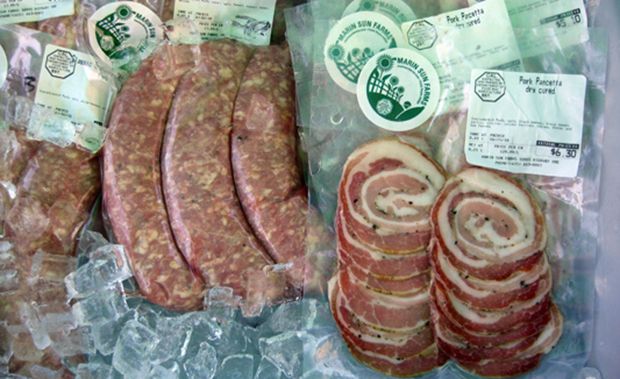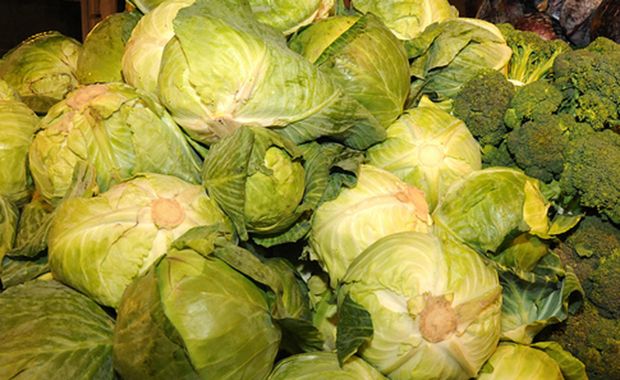A note from Tsh: This guest post is a follow-up to my experience with eating “paleo,” a particular diet involving a heavy amount of veggies, a decent amount of sustainably-raised meats, fruit, nuts, and seeds, and avoiding dairy, soy, grains, and legumes. I don’t eat 100% paleo, but I do my best to stick to that general diet 80% of the time.
Chances are good that you’ve heard of the paleo diet. Maybe you’ve looked into it since reading about Tsh’s experience, or maybe a friend or family member has had some amazing results and you’re wondering if it would work for you, too.
I personally believe that some version of the paleo diet is for pretty much everyone, but there are groups of people who will benefit most. If you fit into one of the following categories, this means you.
Low energy
Eating paleo helps with low/erratic energy in a couple ways: it takes out the grains, sugars, and processed foods and stabilizes your blood sugar, which in turn balances your energy and hormones. Also, many people who have low energy are dealing with hidden food intolerances.
When you eat food to which your body is intolerant, your body recognizes these foods (primarily gluten, dairy, corn, and soy) as foreign invaders and attacks them the way it would attack a virus. This is the root of many issues, not least of which is low-energy.
Brain fog
Did you know the number one symptom of gluten intolerance isn’t digestive distress, but brain fog and other neurological issues? Doctors are learning that the gut and brain are intimately connected, and symptoms of food intolerance are seen more frequently in brain dysfunction than digestion.
Digestive issues
The number one over-the-counter drug sold in the US? Antacids. We have been trained that when our body experiences a symptom after eating, like burping, farting, acid reflux, bloating and stomach aches, it is a “normal” response to eating, and we should take a pill to dull the symptoms.
How great would it be if those antacid commercials instead said, “If any of these symptoms persist, check your diet, honey.”
When your digestion is working and you’re eating foods that agree with your body, you shouldn’t notice any side-effects other than having MORE ENERGY after a meal. This stands in stark contrast to that feeling of being hit by a truck that many people experience daily after eating. The paleo diet removes the foods that trigger digestive distress for most people.
Acne
Your gut, brain, and skin are intricately intertwined. Emotional stress is proven to exacerbate acne, and your gut bacteria are proven to impact your emotions. Further, your gut microflora influences your skin more directly, as signals from these gut microorganisms are sent throughout your body and interact with organisms in your skin and gut mucosa. Healing your digestion is the fundamental way to clear up your skin.
 Photo by SummerTomato
Photo by SummerTomatoExcess weight
Good fat does not make you fat, and not all calories are created equally. Fructose and dietary carbohydrates (grains, which break down into sugar) lead to excess body fat, obesity, and related health issues.
Eating paleo eliminates grains, drastically reducing fructose intake. In addition, obesity is linked to chronic inflammation, so when you remove foods that are toxic and inflammatory to your body, it can begin to heal and release excess weight naturally.
Autoimmune diseases
The most common forms of autoimmune disease include some thyroid diseases (Hashimoto’s and Graves are most common), multiple sclerosis, rheumatoid arthritis, lupus, and vitiligo. Elements of autoimmunity are likely at play in conditions as seemingly unrelated as schizophrenia, infertility, and various forms of cancer.
In simple terms, autoimmunity means your immune system mistakenly attacks your body’s tissue in the way it would attack bacterial, viral, and parasitic infections. In the specific case of Hashimoto’s Disease, eating gut irritating foods like gluten and casein actually leads to the immune system attacking thyroid cells.
High cholesterol > heart disease
I know, I know—how could eating eggs, loads of fat, and red meat reduce cholesterol? Surely this is a typo. Truth is, the story that eating dietary cholesterol leads to heart disease and high cholesterol (LDL) is one of the most insidious health myths ever told.
The paleo diet, rich in fat, can be very effective for reducing blood pressure, cholesterol, and triglyceride levels—more effective, in fact, than a statin drug. It is not uncommon for people to see a 30-point drop in cholesterol in just two weeks of eating paleo!
It’s actually excess sugars (including grains) that promote unhealthy cholesterol levels and raise triglyceride levels because they over-tax your liver, as it cannot properly make cholesterol while simultaneously processing fructose (which it turns into fat). As a result, you end up with impaired cholesterol formation, and eventually your body begins to form arterial plaque to compensate for this deficiency, increasing your risk for heart disease.
The irony is that cholesterol-rich foods (HDL), like eggs, actually help reduce the bad LDL cholesterol. So the recommendation to remove dietary cholesterol and fat from your diet and replace with fat-free processed grains and sugars has further exacerbated the problem.
 Photo by USDAgov
Photo by USDAgovBlood sugar issues > diabetes
With type-2 diabetes, your body becomes desensitized to insulin, the hormone that takes glucose out of your blood stream and releases it into your cells. Since the paleo diet eliminates refined sugar and grains but includes lots of healthy fat and protein, meals are very satisfying and balance your blood sugar, so you are left feeling less hungry and with fewer cravings.
Most people expect that once they’re given a diabetes diagnoses, they’ll have it forever, but it’s actually very common to get off diabetes medication and reverse diabetes when following a paleo diet. Makes perfect sense, since the foods that caused the disease in the first place are eliminated.
Now what?
By healing the underlying imbalances, inflammation, and toxicity caused by the Standard American Diet (SAD), you can begin to heal from the issues listed above. If you’d like to take a paleo diet for a test drive, there are lots of people and resources to support you!
I’m offering a free Paleo Starter Guide on my website that will help you setup your paleo kitchen and also give you yummy and easy paleo ideas for every meal of the day. If you’re ready to go all the way, I’m about to release an at-home learning program: “Paleo Cooking at Home: Fast, Cheap & Easy,” created specifically to address the needs of people transitioning to a paleo lifestyle or looking for new tools to add to their paleo arsenal.
A final note from Tsh: I know a lot of you have asked about my experience with switching to a paleo diet, and I promise, a post is in the works. Hopefully this simple primer from Camille has given you a rundown of the basic benefits for eating this way. I don’t subscribe to any school of thought that says you have to do something perfectly in order for it to work (hence my 80% approach to paleo). But I will say that I’ve felt better than I have in years eating paleo—in a nutshell, I feel normal, like my body functions the way it has always meant to work. That’s been amazing. In the spirit of simple living (the clarion call of this blog), the paleo diet has helped simplify my family’s approach to eating—simple, whole ingredients, eating ethically-raised meats and produce, and focusing on seasonal meals. It’s been fun.
What questions do you have for Camille about the paleo diet?



